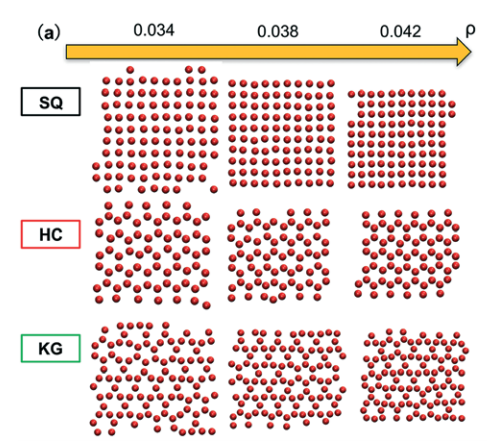Abstract
Two dimensional nanoparticle lattices can exhibit unique optical, electrical, and chemical properties giving rise to emerging applications for photovoltaic conversion, electronics and optical devices. In many applications, it is useful to be able to control the particle spacing, the crystal lattice formed, and the local composition of the lattice by co-locating nanoparticles of varying chemistry. However, control over all of these variables requires exquisite control over the interparticle interactions, and a large number of degrees of freedom affect the interactions. Achieving a particular structure by design requires solving the inverse-design problem, where one must optimize the chemistry to meet the structure or property that is desired. In recent years, a variety of examples have shown that one can finely control the interactions between nanoparticles through the use of polymers grafted onto the nanoparticle surface and by controlling the grafting density and the distribution of molecular weights on the nanoparticle surface. In this work, we take the first steps on solving the inverse design problem using an approach that explicitly accounts for the chemistry on the surfaces of the particles. Using two-dimensional hybrid particle/field theory calculations and an evolutionary design strategy, we design polymer grafted nanoparticles that self-assemble into targeted square, honeycomb, and kagome lattices. We optimize both the length and grafting density of the polymers grafted to the nanoparticles, and we show that our design strategies are stable over a range of nanoparticle concentrations. Finally, we show that three-body interactions are critical for stabilizing targeted structures.
